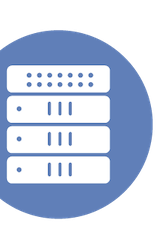As discussed at AI Field Day, Solidigm’s storage system addresses the diverse and intense demands of AI workloads, ensuring GPUs remain constantly fed with data. Recognizing the variety in I/O patterns and the substantial data processing required for machine learning, Solidigm’s SSDs offer superior performance for sequential and random read/write activities, consuming less power and space in datacenters. Additionally, their Cloud Storage Acceleration Layer (CSAL) software enhances the durability and efficiency of SSDs by optimizing write patterns, making it an open-source boon for those seeking to streamline AI-based operations. Read more in this Gestalt IT article by Sulagna Saha.
Exploring Data in the AI Era With Solidigm – New Data Insights Series
The TechArena has launched a Data Insights Series, joining forces with Solidigm, where they will explore the intricate landscape of data in the AI era. Hosted by Allyson Klein with Jeniece Wronowski and Ace Stryker from Solidigm, the series will delve into the objectives of understanding and leveraging data, underscoring the central role of SSD innovation in crafting modern data pipelines. This initiative aims to shed light on the transformative influence of storage solutions in AI advancements, positioning SSDs as a cornerstone technology in data-centric environments.
Don’t Let Storage Be Your AI Training Kryptonite
In the rapidly advancing field of AI, efficiently managing checkpoints during model training is crucial, and Solidigm’s QLC drives offer a solution that mitigates the risk of slow storage becoming a bottleneck. Their high-performance drives support the significant read/write operations required for frequent checkpointing, enabling data scientists to maintain efficient workflows and reduce training costs. Solidigm’s dense storage enclosures optimize data centre space while providing the necessary infrastructure for high-capacity AI datasets, proving that fast storage is the unsung hero in the race towards AI innovation. Read more in this article by Ben Young, reacting to AI Field Day.
Why Storage Matters for AI: Solidigm Shares POV at AI Field Day
During AI Field Day, Solidigm’s Ace Stryker and Alan Bumgarner illustrated the pivotal role of SSDs in AI applications, showcasing how they cater to the high data demands of models and workflows with increased efficiency. They highlighted the superiority of SSDs over HDDs in terms of performance and Total Cost of Ownership, emphasizing the tangible benefits from greater data density to reduced physical infrastructure needs. The presentation honed in on the importance of storage in AI, linking Solidigm’s advanced SSD solutions with scalable and power-efficient AI server operations, resonating with sustainability goals and operational cost reduction.
Does Storage Matter in AI Inferencing? What About the SSD?
Keith Townsend reacts to Solidigm’s presentation at AI Field Day, considering the role of storage systems in AI inferencing and the impact of SSD selection on AI system design. This video underscores the significance of considering storage performance and reliability when devising robust AI inferencing architectures. Solidigm’s discussion reflected a deeper industry focus on the intricate relationship between storage solutions and AI capabilities, suggesting that the choice of SSDs could be a pivotal factor in optimizing AI inferencing operations.
Insights From the AI Field Day: A Futurum Group Overview
In this LinkedIn Pulse article, Paul Nashawaty of The Futurum Group summarizes all of the AI Field Day presentations, highlighting VMware’s deep dive into Private AI in collaboration with industry giants like NVIDIA and IBM, and Intel’s focus on deploying AI inference models with Xeon CPUs across diverse environments. Next-generation AI-infused storage solutions from Solidigm and SuperMicro underscored the critical role of optimized storage in AI, while Vast Data focused on addressing the growing data demands of AI and HPC workloads. Google Cloud’s session on AI platforms and infrastructures showcased innovative approaches with Kubernetes at the core, paving the way for accessible and powerful AI development and deployment.
Storage for AI: Data Professional Overview
The use of the term ‘data management’ is subject to varying interpretations between data professionals and storage providers, leading to some confusion when discussing the scope of services. Solidigm highlights the unique storage requirements for AI, as Karen Lopez wrote, emphasizing that AI servers need significantly more capacity and have specific data demands across different stages: Data ingest, Data prep, Training, Checkpointing, and Inference. As data professionals, our understanding of these distinct data workloads enables us to contribute valuably to discussions on data architecture, especially in collaboration with companies like Supermicro, who integrate these storage solutions into their AI server offerings.
Why Storage Matters for AI – Solidigm
During AI Field Day 4, Solidigm, alongside partner Supermicro, spotlighted the pivotal role of storage in AI, as discussed by Gina Rosenthal. Ace Stryker of Solidigm emphasized the need to shift from HDDs to solid-state drives, aligning with the trends of chip spending growth and the demand for higher storage in AI servers. Supermicro’s Wendell Wenjen and Paul McLeod further discussed the integration with WEKA and the importance of storage in AIOps, indicating that a substantial portion of Supermicro’s revenue is derived from AI-related ventures.
The Year of AI at AI Field Day 4
AI Field Day returns on February 21st-23rd, giving a broad perspective on AI’s foundational technologies in a year touted to be pivotal for artificial intelligence. Attendees can expect in-depth sessions with industry giant Intel as well as key players VMware by Broadcom, Qlik, Hammerspace, Solidigm, VAST Data, and many more. This event explores revolutionary AI applications and their infrastructure demands, and will be broadcast live for a global audience. Watch live on LinkedIn and the Tech Field Day website and catch the recordings on YouTube!
The Year of AI at AI Field Day 4
Everybody says that 2024 is the year of AI, but our industry has been building the foundation for years. From processors and accelerators to storage and data platforms, applications that leverage machine learning have special demands. That’s the focus of AI Field Day, which features an entire day sponsored by Intel, plus two more days filled with presentations by a diverse range of companies. The next AI Field Day event is February 21st through 23rd. The event will be broadcast live on LinkedIn and on the Tech Field Day website, starting at 8:00 a.m. Pacific time, Wednesday through Friday, with more presentations throughout the day from VMware by Broadcom, VAST Data, Hammerspace, Qlik, Solidigm, and a whole day of presentations presented by Intel with key partners and customers.
Spinning Disk Use Cases Are Getting Smaller
Jim Jones shares his perspective on the evolving landscape of data storage, noting the diminishing number of use cases for spinning disk technology in his latest blog post. As the performance gap between spinning disks and SSDs continues to widen, he explores the implications for enterprises and their storage strategies. Dive into his analysis to understand the current state of storage solutions and the direction in which the industry is headed.
Edge Field Day: The Value of High-Density Storage at the Edge
Discover the transformative potential of high-density storage at the edge through this series of Edge Field Day videos presented by Solidigm. Roger Corell, Jeniece Wnorowski, and Tahmid Rahman draw upon their extensive backgrounds in data center storage solutions to illuminate the advantages and applications of Solidigm’s cutting-edge SSD innovations. With a focus on product positioning and real-world integration, these presentations provide a deep dive into how high-density storage is reshaping data management at the network edge.
Miscreants in Action: Edge Computing (Or Something)
John Osman recaps his experience as a delegate at Edge Field Day. Despite engaging discussions and presentations from Solidigm, StorMagic, and NodeWeaver, he admits to remaining unclear on the precise definition of Edge Computing, expressing that it may be too vast and varied to reduce to a strict definition. Ultimately, the author settles on the understanding of Edge Computing as an optimization strategy that involves distributed computing, recognizing the breadth of its applications.
Solidigm QLC SSD’s Proven Reliability, Performance and Density Perfect for Challenging Edge Computing Environments
Ben Young explores Solidigm’s QLC SSDs, praising their performance, reliability, and density as ideal for challenging edge computing environments. Amid an AI and IoT revolution that has data generation ballooning, he notes Solidigm’s industry-leading range of devices and impressive performance stats as a potent solution. Young emphasizes the particular value these drives offer in edge environments with heavy storage requirements, but also advocates their applicability for any data-intensive application, whether at the edge or in the data center.
Exciting Innovation Is Happening at the Edge
Brian Knudtson emphasizes the growing innovation within the Edge sector of the IT industry, illustrated by the advancements showcased at Edge Field Day 2. Companies like Solidigm, StorMagic and NodeWeaver are developing impressive solutions for storage and deployment at the Edge, each with their unique approaches and functionalities. The author anticipates the lessons learned from the technological innovations for extreme use cases at the Edge will eventually influence the core data center and cloud sectors.
Thinking About… Storage in 2023
Jim Jones discusses the ways storage has developed in 2023 and beyond. He predicts dramatic improvements in capacity and access speed due to developments in technologies like NVMe and CXL and also foresees advancements in how storage is managed and consumed, highlighting the emergence of hybrid-approaches involving on-premises, edge, and cloud deployments.
Solidigm Presents Optane Replacement
W. Curtis Preston reviews Solidigm’s solution to the gap left by Intel discontinuing its SSD offering Optane. Solidigm, created by SK Hynix after buying Intel’s NAND business, recently introduced the D7-P5810, a new ultra-fast SSD with impressive endurance and performance features. Solidigm is positioning this product in conjunction with their Cloud Storage Acceleration Layer as a viable replacement for Optane.
Solidigm SSD Form Factors – Small, but Mighty
Solidigm presented their wafer-thin SSD form factors at the recent Edge Field Day event. The drives pack unprecedented power and performance within the smallest footprint. Read about them at Gestalt IT, or watch the presentations here on the site.
Edge of Tomorrow: Tech Field Day EFD #2
Reflecting on his experience as a delegate for Gestalt IT’s Edge Field Day event, Jim Czuprynski speaks to the exponential evolution of edge computing. Three vendors presented diverse solutions to edge computing challenges, with key topics including growing analytics at the edge, maintaining communication between nodes in small-scale settings, and managing edge computing devices. The firsthand experience at the event offered plentiful insights into the realities and future prospects of edge computing technologies.








